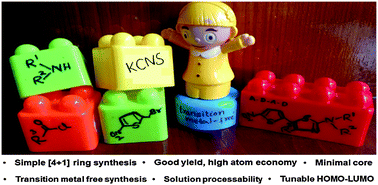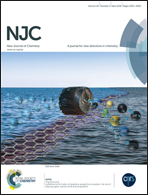Expanding the donor–acceptor toolbox with a minimal 5-(thiophen-2-yl)-1,3-thiazole core: transition metal-free synthesis and molecular design for HOMO–LUMO energy modulations†
Abstract
Synthesis of a minimal 5-(thiophen-2-yl)-1,3-thiazole core through a transition metal-free, versatile [4+1] route is reported. DFT calculations on a prototype library of D–A–D–A tetrads established the exquisite HOMO–LUMO energy modulation by varying peripheral D/A groups. Our results indicate the vast scope of this novel core in molecular engineering of materials for optoelectronics.


 Please wait while we load your content...
Please wait while we load your content...